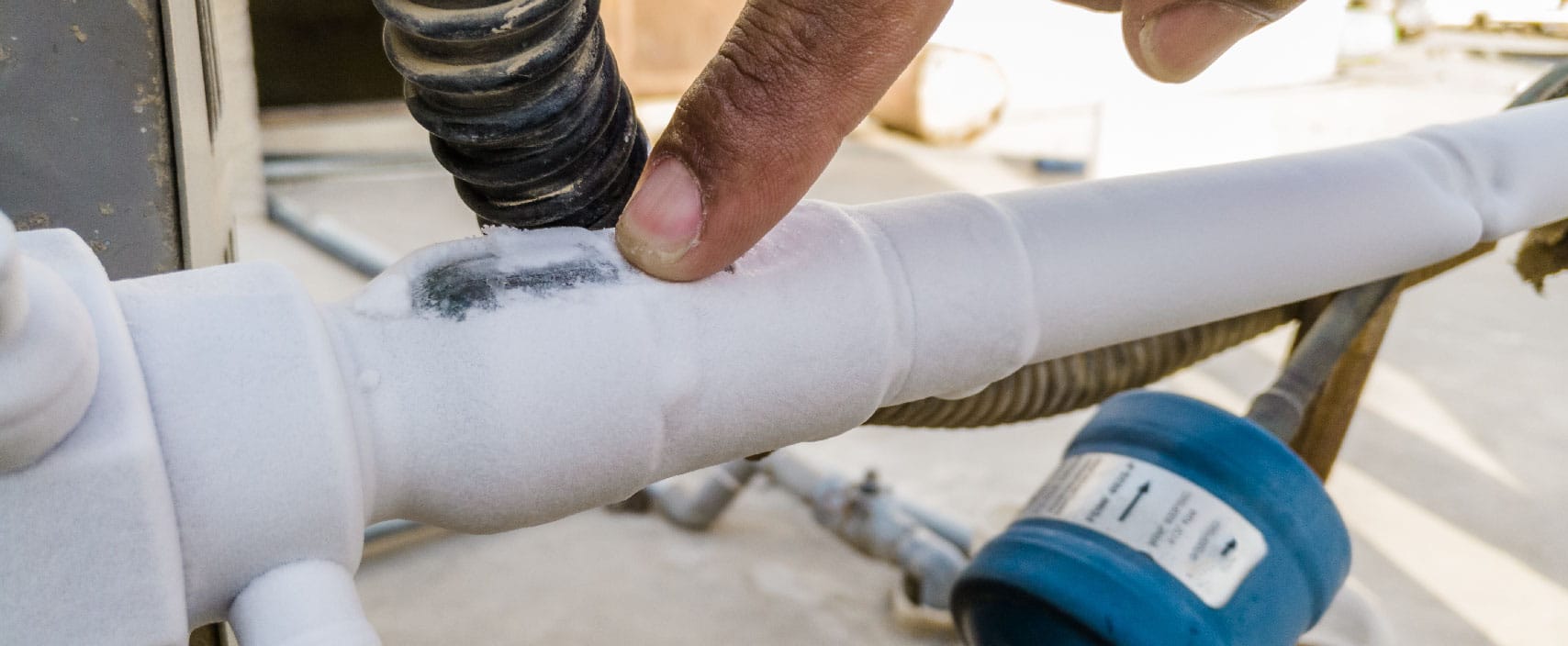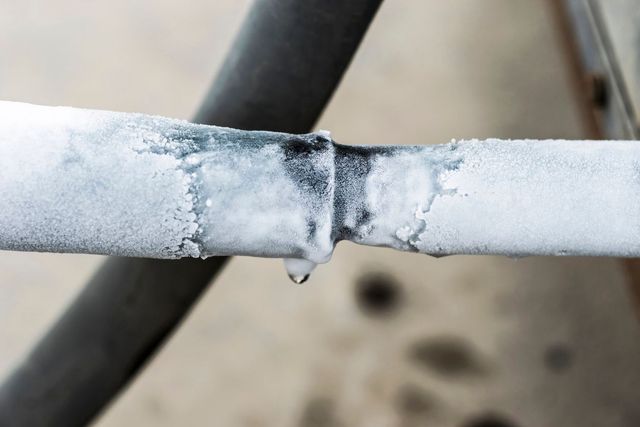How to Handle a Frozen AC Pipe - Critical Measures for Recovery
How to Handle a Frozen AC Pipe - Critical Measures for Recovery
Blog Article
Each person will have their personal opinion involving What Do I Do If My AC Pipe Is Frozen.

Introduction
Discovering that your air conditioner pipeline is frozen can be concerning, specifically throughout warm summertime when you count on your a/c the most. Understanding what to do in such a scenario is crucial to stop additional damage to your air conditioning system and guarantee your comfort inside your home.
Comprehending the Causes
Several aspects can contribute to the freezing of an a/c pipe. Recognizing these causes can help you deal with the concern successfully.
Absence of Airflow
One usual cause of an icy AC pipe is inadequate air movement. When the air flow over the evaporator coil is limited, it can create the coil to go down below freezing temperature level, leading to ice formation on the pipeline.
Reduced Refrigerant Levels
Not enough refrigerant levels in your air conditioning system can additionally result in a frozen pipe. Low cooling agent degrees can trigger the stress in the system to drop, leading to the freezing of moisture on the evaporator coil.
Winter Conditions
In chillier climates, freezing temperatures outside can contribute to the cold of air conditioner pipelines. If your AC system is not correctly protected or if there are leakages in the ductwork, cold air can infiltrate the system, causing the pipeline to ice up.
Dirty Air Filters
Filthy or clogged air filters can restrict air flow in your AC system, leading to various issues, consisting of an icy pipeline. It's vital to replace or cleanse your air filters frequently to ensure appropriate airflow and avoid ice accumulation.
Indicators of a Frozen Air Conditioning Pipe
Identifying the indications of an icy air conditioning pipeline is essential for punctual action.
Decreased Airflow
If you see a substantial decrease in air movement from your vents, it might suggest an icy pipe.
Ice Buildup on the Pipe
Noticeable ice accumulation on the cooling agent line or the evaporator coil is a clear sign of an icy air conditioning pipeline.
Strange Sounds from the Unit
Uncommon noises, such as hissing or gurgling, originating from your air conditioning unit can indicate that there's ice present on the pipe.
Immediate Actions to Take
When faced with an icy air conditioning pipeline, it's necessary to act rapidly to avoid additional damages to your air conditioning system.
Shutting off the AC
The primary step is to turn off your air conditioning unit to avoid the system from running and aggravating the issue.
Looking for Blockages
Check the area around the interior device for any type of obstructions that may be blocking airflow, such as furnishings or curtains.
Defrosting the Pipe
You can make use of mild approaches like placing towels soaked in warm water around the icy pipe to assist thaw it slowly.
Safety nets
Taking preventive measures can assist stay clear of future incidents of a frozen AC pipeline.
When DIY Methods Fail
If your efforts to thaw the pipeline or address other issues are unsuccessful, it's time to call in an expert.
Relevance of Hiring a Professional HVAC Technician
A licensed HVAC professional has the know-how and tools necessary to diagnose and fix issues with your AC system securely and successfully.
Regular Maintenance Checks
Arrange normal upkeep get in touch with a professional HVAC technician to guarantee that your AC system is running successfully.
Changing Air Filters
Frequently change or clean your air filters to avoid airflow limitations and maintain ideal performance.
Shielding Exposed Pipes
If your air conditioning pipelines are exposed to cold temperatures, consider protecting them to avoid freezing during winter months.
Looking For Professional Help
If DIY approaches fall short to solve the concern or if you're unclear about how to proceed, it's finest to look for help from a certified HVAC technician.
Verdict
Dealing with a frozen air conditioning pipeline can be a frustrating experience, yet recognizing exactly how to respond can assist lessen damages and recover convenience to your home. By comprehending the causes, identifying the indications, and taking prompt activity, you can properly address the issue and avoid future incidents.
Frozen AC Line: Why It Happens & What To Do About It
A frozen AC line can be a rather peculiar sight in a place like Phoenix, Arizona where nothing ever freezes. In this post, we’ll discuss what makes an air conditioner line frozen – and what you can do about it.
Dirty Air Filters
Did you know that you should be cleaning or replacing your air filters on a monthly basis? Failing to do this can result in airflow issues that, in turn, cause your evaporator coils and lines to freeze over. You’ll notice a buildup of ice on both components, although the buildup on your pipes will, of course, be more evident unless you open your air condition up to reveal the coils.
What To Do About It
Give your air filter a good cleaning if it’s reusable. If not, replace the filter outright. Next, switch your air conditioner’s fan setting on and leave it there for 2-3 hours. This will draw warm air in, helping to thaw your evaporator coil. You can also check out this article for some tips on cleaning the coils themselves if you’d like to speed the process up. Before you switch the unit back to its normal state, make sure the supply vents are completely unobstructed and free of dust or other debris.
If you keep having this issue even after replacing your filters regularly, contact a local HVAC repair company and have them inspect your evaporator coil, ductwork, and any other components that may be at fault. If you live in the Phoenix, Arizona area, give American Home Water and Air a call.
Low Refrigerant Levels/Leakage
What To Do About It
Contrary to what air conditioner “recharge” companies often tell their clients about refrigerant, it should never need to be simply refilled. You see, refrigerant runs in what experts refer to as a “closed loop.” Refrigerant really shouldn’t be leaving that loop. If it is, you’ve got a leak.
Paying someone to come and pump more refrigerant into your system (aka “recharge” it) isn’t the solution. Doing that will simply kick the can down the road. Besides, refrigerant leaks can be harmful to the environment and people in your home.
Rather, you need to take care of the leak with the help of a technician. Check out this article for some more information about dealing with air conditioners that are leaking refrigerant. Before you contact a technician, switch your thermostat to the off position. Then, switch the fan setting on and let it run for 2-3 hours so the unit can thaw.
Improper Temperature Setting
Improper temperature settings can also cause a drop in your air conditioner’s pressure. What many people don’t realize is that air conditioners are actually designed to run when temperatures have fallen above roughly 60 degrees Fahrenheit. If you run the unit when it’s cold outside, you’ll run into many issues, including frozen components.

I stumbled upon that page about Air Conditioner Frozen? How To Fix your Frozen AC Line when doing a search on the search engines. Be sure to take the time to distribute this write-up if you appreciated it. Thank-you for going through it.
Make An Appointment Report this page